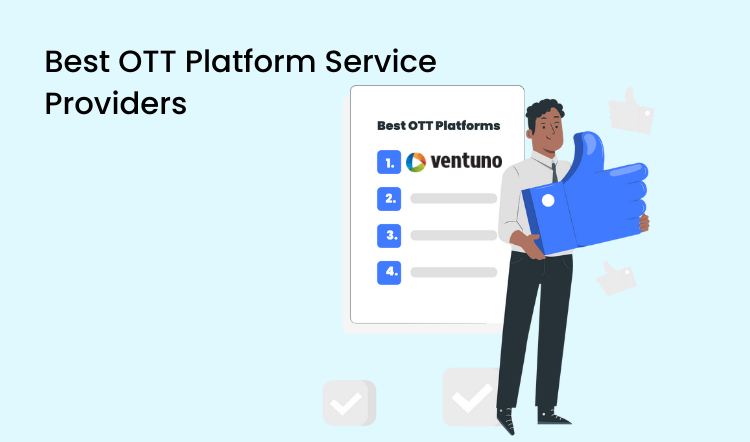How to Embrace Current Trends to Create Appealing Video Content
Last Updated on March 31, 2023 by Anjana Devi
With the rising popularity of streaming apps, video marketing is at its peak. The internet makes it easier for you to reach out to your audience compared to traditional TV. However, this would also mean that there are countless video contents out there competing for their attention. You would have to work double-time in ensuring that your content could stand above the rest.
According to a study by Statista, video advertising spending is projected to reach $27.795 million in 2020. Businesses are now focusing their resources and energy on improving their video promotion strategy. It is high time you start looking into creating and promoting more appealing video content for your audience.
With that, here are some video content trends in 2020 to give you some inspiration on how you should go about with your video marketing strategy.
Table of Contents :
3. Personalize your video content
4. Provide Interactive Content
6. Vlogging can add authenticity
8. Embracing the future of Video Content
Lookout for AVOD
Advertising Video on Demand (AVOD) is rapidly rising the ranks as free streaming apps grow even more popular among internet users. These platforms serve video ads for each video instead of forcing their audiences to subscribe or pay to access their video content. This is a great way for content creators to generate more views in the process.
In fact, Media Play News predicts that AVOD will earn a 25% increase in revenues this year compared to 2019. Compared to SVOD, you can gain more revenues from advertisers instead of relying on your audiences’ willingness to pay. Not to mention, it allows you to reach out to more people, especially those without enough resources to pay for other premium entertainment.
Likewise, you can attract more viewers since your content will be easily accessible. However, the possible downside to this model would be delayed profitability. This means you must build up your brand and content until it gains enough traction to attract advertisers and more views.
Cross-platform compatibility
More and more people nowadays prefer using their smartphones over their laptops or PCs. Therefore, you must make sure that your video content marketing is optimized for all the devices used to watch videos. This would mean adopting a mobile-first approach when creating videos by ensuring it plays perfectly in smaller screen sizes and resolutions to maintain its content.
Just recently, vertical videos are rapidly becoming popular on the internet. Compared to horizontal videos, vertical ones allow your viewers to watch your content without tilting their phones. This makes your videos less invasive to watch—especially when it’s just a short video. Likewise, this allows your videos to integrate seamlessly into social media feeds to entice more people to stay and watch instead of scrolling past them.
Personalize your video content
Thanks to various technological tools and software, businesses are becoming more data-driven in terms of developing their content and marketing strategies. Through data and analytics, they can identify common trends, patterns, behaviors, and preferences among their target audience. And in turn, they can use this information to determine how to create video content that appeals to their viewers.
With the right data, you can personalize your video content to suit your target market. Doing so could increase their engagement with your content and convert them into customers in the process.
Personalization does not only extend to your audience but your brand as well. You can customize your video content to suit your business’ branding. Creating a cohesive and consistent design or format across all your video contents ensures your viewers would remember you amid all the other competitors vying for their attention.
Provide interactive content
With the numerous advancements for video creations, you can step out of traditional video making and turn it into something completely different. For one, you can provide a 360-degree video experience for your viewers. You can control the camera around to get a full view of whatever is inside the video, making the experience all the more immersive and exciting. Likewise, it encourages your audience to engage with your video longer compared to traditional video formats.
Another interactive element you can add to your videos is clickable links. This can redirect your audience to relevant pages to prolong engagement with them. You can even make your videos “shoppable.” This would allow your viewers to purchase your products or services on the spot by simply providing a link in the video itself. Some even adopt live stream formats by using software from this video conferencing software compilation to make their videos more dynamic.
Keep it short and sweet
Short videos are the craze nowadays. You must have seen all those so-called micro-videos on Facebook, Instagram, TikTok, and Twitter. While they might disguise them under different names (i.e., Moments, Stories, My Day, etc.), all sport the same seconds-long videos that vanish after 24 hours.
Lately, brands are also embracing such a format for their content. For one, it could garner more views compared to longer ones. Most importantly, their audience could manage to stick to it from start to end. That is because before your viewers could even decide to move on to the next content, your video has already reached its end.
This is a great way for your brand to gain traction in the market. You can easily integrate these short videos into various social media websites. Likewise, it would cost you less to produce such videos compared to longer ones.
Vlogging can add authenticity
Over the years, you can see the increase of vlogging content on YouTube and other social media channels. Their niche could vary wildly—from travel, lifestyle, fashion, and food. Often, it simply documents the ordinary, day-to-day activities of some famous influencers or celebrities.
Many brands are starting to see the benefits of vlogging for their marketing strategy. Through it, they can show a more human and authentic side of their business that could appeal and relate to their viewers. This adds a dash of authenticity to your brand, increasing customers’ trust in the process.
Make your video searchable
Anyone can now look for specific video content with a search engine. Google, for one, could offer up results based on descriptions or snippets of video-related queries. It can then play short parts of the videos based on the keywords used.
This makes search optimization a crucial part in how to promote video content. An effective search optimization ensures that you rank well in results. In turn, you could increase exposure for your content and attract more viewers in the process. Just keep in mind some search engine optimization (SEO) techniques and apply them to your video content.
Embracing the future of video content
To get an edge over your competitors, you must start embracing the current trends in video content creation and promotion. This will make sure that your content remains relevant in a time where people are faced with content overload.
What are your thoughts on this article? reach out to us at info@ventunotech.com if you would like to discuss!
Looking to launch your streaming app?





